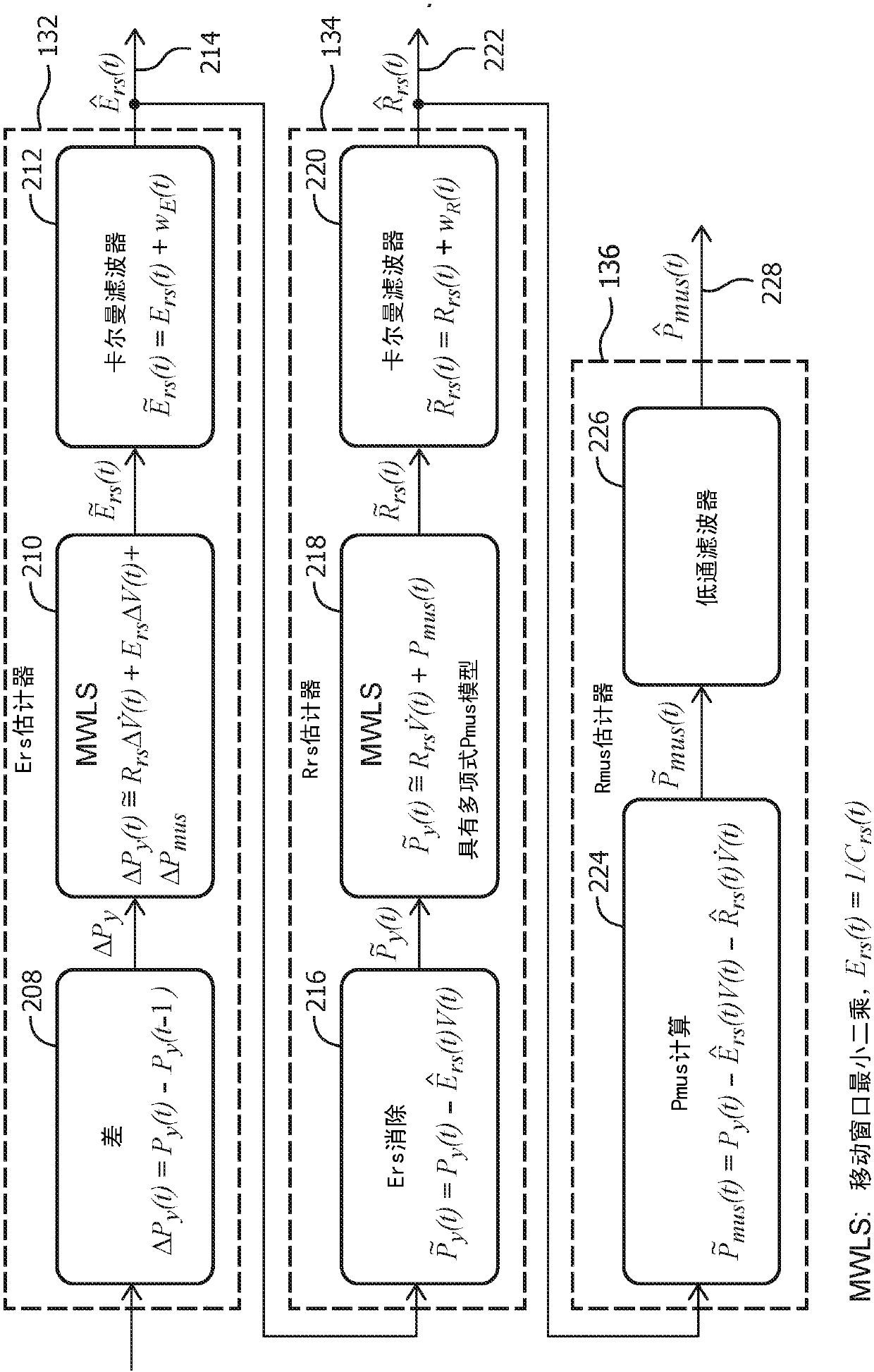Non-invasive method for monitoring patient respiratory status via successive parameter estimation
A patient, estimated value technology, applied in the direction of respirator, application, drug device, etc., can solve problems such as noise sensitivity
- Summary
- Abstract
- Description
- Claims
- Application Information
AI Technical Summary
Problems solved by technology
Method used
Image
Examples
Embodiment Construction
[0023] The following relates to the characterization of respiratory parameters during patient ventilation, in particular the respiratory muscle pressure P mus (t), breathing resistance R rs and respiratory compliance C r or Elastic E r =1 / C r . In principle, these parameters can be estimated using the equation of lung motion (equation (1)), which relates these parameters to the pressure P at the ventilator interface y (t) and air flow together with the air volume of the lungs relevant. In practice, due to the respiratory muscle pressure P mus (t) varies over time, so P is jointly estimated using the lung motion equation mus (t), R rs and E rs is usually underdetermined and cannot be solved analytically. Various ways of dealing with this include using invasive probes to measure additional information, or creating "special case" environments through manipulations such as interrupting normal breathing. Invasive probes have significant disadvantages, and techniques t...
PUM
 Login to View More
Login to View More Abstract
Description
Claims
Application Information
 Login to View More
Login to View More - R&D
- Intellectual Property
- Life Sciences
- Materials
- Tech Scout
- Unparalleled Data Quality
- Higher Quality Content
- 60% Fewer Hallucinations
Browse by: Latest US Patents, China's latest patents, Technical Efficacy Thesaurus, Application Domain, Technology Topic, Popular Technical Reports.
© 2025 PatSnap. All rights reserved.Legal|Privacy policy|Modern Slavery Act Transparency Statement|Sitemap|About US| Contact US: help@patsnap.com



